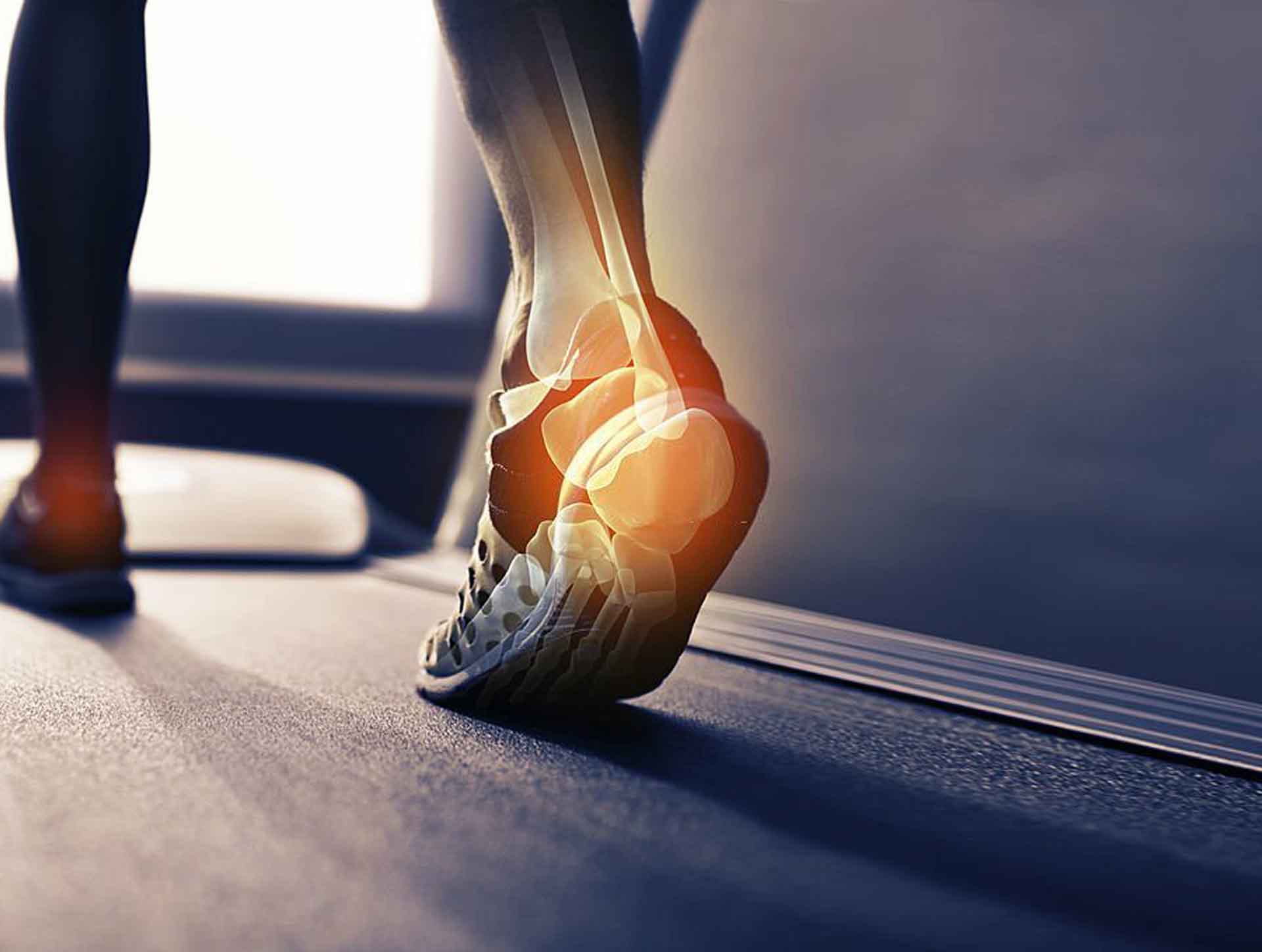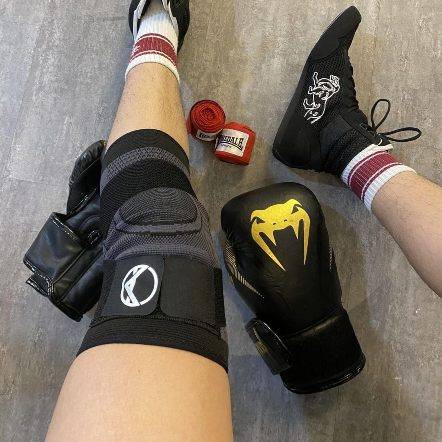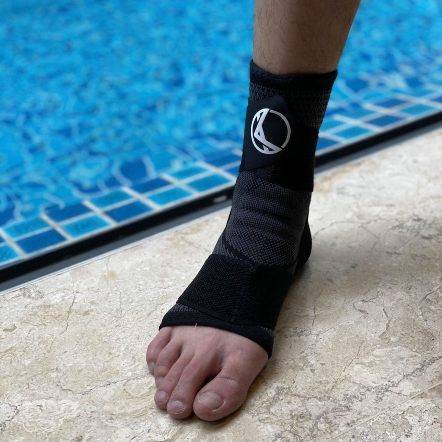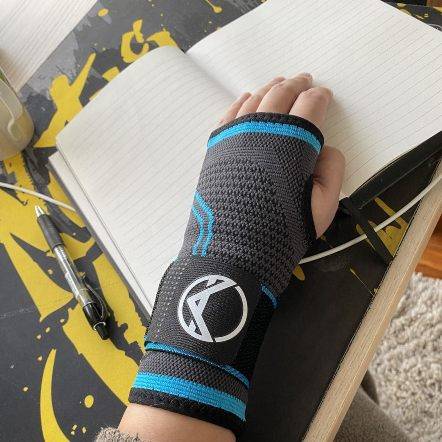
november 7, 2023 | 3 Mins Read
TABLE OF CONTENTS
Have you ever felt like your heel has become a battleground for sharp, stabbing pain as soon as you put your foot down? That's the signature distress call of plantar fasciitis. It's not just discomfort; it's a full-blown flare-up of one of the most common orthopedic complaints relating to the foot. So, why does this condition choose to ignite its fiery sting at certain times?
Read on to discover the factors that can cause plantar fasciitis to flare up and how you can prevent it from happening.

Plantar fasciitis is a condition that occurs when the plantar fascia, a band of tissue that runs along the bottom of your foot, becomes inflamed and irritated. As we age, the elasticity of the plantar fascia ligament can become worn out, leading to micro-tears and inflammation. Everyday activities such as walking, running or even standing for long periods can put pressure on this already weakened ligament and cause it to flare up.
Some of the indicators of a plantar fasciitis flare-up include:
So, what triggers such a painful and frustrating flare-up? Here are some of the most common causes:
Shoes without proper arch support directly contribute to plantar fasciitis flare-ups. Worn-out soles and unsupportive footwear force your plantar fascia to compensate for the lack of protection and support, leading to strain and pain. High heels are particularly harmful; they tip the balance of your foot's natural alignment, increasing tension on your plantar fascia.
Essentially, when your shoes fail at their job of supporting your feet, the plantar fascia is forced to pick up the slack, which can result in sharp, persistent heel pain.
Ramping up your activity level too quickly, especially with high-impact exercises like running, can spark a plantar fasciitis flare-up. Your plantar fascia isn't just a static band in your foot; it's a dynamic tissue that absorbs the shock of every heel strike. When you push it too hard without proper conditioning, you stress this band, causing inflammation and pain. It's similar to lifting heavy weights without proper training—you're likely to end up with an injury.
So, if you suddenly jump into intense workouts or extend your running mileage too fast, you're asking a lot of your plantar fascia, and it may push back with pain as a protest.
Extra body weight directly increases the stress on your plantar fascia. This band of tissue, designed to absorb the impact of your steps, gets overloaded when there's more weight to bear. During pregnancy, this issue is two-fold; the added pounds and the shift in how you walk to accommodate a changing center of gravity both put extra pressure on the feet.
Essentially, the more weight the plantar fascia has to support, the higher the risk of inflammation and pain. It's important to manage weight through a healthy diet and safe exercise to alleviate undue pressure on the feet.
Your foot's shape and the way you walk can set the stage for plantar fasciitis. High arches can be rigid and poor at absorbing shock, while flat feet may not provide enough arch support, leading to overstretching of the plantar fascia. If your walk is uneven, it can distribute weight incorrectly, creating extra stress on the tissue. It's like a car with one flat tire; the imbalance impacts the whole vehicle. Addressing these anatomical quirks with the right footwear or custom orthotics can help distribute pressure more evenly and prevent flare-ups.
When it comes to plantar fasciitis flare-ups, it's not just physical factors that play a role. Lifestyle and environmental triggers can also contribute to the inflammation and pain associated with this condition. These triggers may not directly affect the foot, but they can impact overall health and increase susceptibility to flare-ups.
Here are some of the most common lifestyle and environmental factors that can lead to plantar fasciitis flare-ups:
Jobs demanding hours of standing or walking on unforgiving surfaces heighten the risk of plantar fasciitis. Teachers, factory workers, and healthcare providers often fall prey to this condition due to the relentless pressure their feet endure throughout the day. The hard surfaces act like a hammer to the heel with each step, putting a strain on the plantar fascia. This repetitive stress can inflame the tissue, leading to persistent heel pain indicative of a plantar fasciitis flare-up.
A sedentary lifestyle might seem harmless, but it can lay the groundwork for plantar fasciitis pain. When you don't move much, the muscles in your feet and legs weaken. Weak muscles don't support the plantar fascia well, which can lead to pain. Moreover, sitting too much can lead to weight gain. Extra weight means extra pressure on your feet every time you take a step. That pressure can stretch and strain the plantar fascia, causing inflammation and pain.
Risk Factors for Plantar Fasciitis Flare-Ups
While anyone can develop plantar fasciitis, certain risk factors increase the likelihood of experiencing flare-ups. These include:
What you eat can influence inflammation in your body, which in turn may affect plantar fasciitis symptoms. Diets high in refined sugars, excessive caffeine, and saturated fats can kickstart inflammation, essentially throwing fuel on the already-irritated plantar fascia.

Typically/ On average, a plantar fasciitis flare-up can last anywhere from several days to a few weeks. However, the duration of a flare-up depends on various factors such as the severity of the condition, how soon treatment is sought out, and how well you follow your doctor's recommendations for managing symptoms.
If left untreated or not adequately addressed, plantar fasciitis
Plantar fasciitis is a common foot condition that affects millions of people worldwide. As mentioned in the previous sections, there are several factors that can contribute to flare-ups of this painful condition. In addition to lifestyle and environmental triggers, certain medical conditions can also play a role in the development of plantar fasciitis. Here are some examples:
Plantar fasciitis can be a pesky problem. While it's not necessarily one that will go away on its own, it is manageable and sometimes preventable. There are many steps you can take to reduce the risk of developing this condition or alleviate symptoms if you've already been diagnosed. Below are some preventative measures and management strategies for plantar fasciitis:
Got persistent heel pain that just won't quit? Here's what to ask yourself:
Wrangling with plantar fasciitis flare-ups can put a real damper on your step, but getting to grips with the triggers paves the way for smoother strides ahead. By pinpointing what sets off your heel pain and embracing preventative strategies—like slipping on a supportive Koprez Plantar Fasciitis Sleeve—you can dial down the discomfort and reclaim your active life.
Your soles will thank you for the extra love and support. And remember, when it comes to foot care, you're not just making moves—you're making all the right ones. Slip into a Koprez Plantar Fasciitis Sleeve and step into comfort. Get yours today!
Author

Claire Evans worked as the content marketing manager at Koprez. Claire combined a background of writing and editing, marketing, and patient education to best serve consumers, fitness enthusiasts, athletes, and anyone who relies on the Koprez brand for helpful information.
Koprez® Featured Products


"I sprain my wrist super often, so I decided to try out this sleeve. This is game-changing! I've been using it for a while now, and my wrists feel amazing. I haven't gotten in any injuries since using it too. It just makes my wrists feel so supported."
Alexis A.


"Use this for my boxing training. It is a very comfortable brace and does not move out of position during skipping ropes and sparring sessions. I use it while running too. Probably the best brace I've purchased throughout the years. It is very flexible. Makes me look like a pro! :)"
Samuel L.


"I've just got back to running after a couple of years of being plagued by injury. These compressions socks are helping give me peace of mind while I build up my distance again. They are the perfect level of compression, super comfy, and very high quality. Feel great while on a run, and looks great in the orange colour I have!"
Dave R.


"I have a weak ankle, and the Koprez ankle sleeve has been a lifesaver. Wear it every day. Super breathable and comfortable. Like wearing a cool sporty looking sock!"
James F.


"This is the best knee sleeve I've ever tried. It's now a must-have for all my exercises. A few years ago, I had an accident that damaged my knees, but with Koprez I can be active again with no knee pains at all. It's been truly amazing!"
Alex M.


"One of the best purchases I've ever made. It fits your legs all the way from top to bottom, great snug fit, gives you support and definitely helps during rehab and training."
Rafael A.


"I had a minor elbow injury, and Koprez sleeve was super supportive and definitely helped me recover faster. I still use the sleeve to prevent further injury. So far, so good. Very comfortable and does not feel hot at all. Highly recommend!"
Corey B.


"It's really been a game-changer for me. It allows me to exercise a lot longer than I used to. Now my knees don't hurt, and they're not uncomfortable at all."
Mike P.


"Great product!!"
Harold


"I have carpal tunnel, and this brace has helped me work pain-free. Love the materials, and I can feel my wrists slowly getting better, even when I don't wear them!"
Christopher J.


"I wanted to try out these sleeves to improve my squats and deadlift in the gym without worrying about injuring my knees. They stayed up throughout the entire gym session, and my knees feel super supported. Now I can do what I love for years to come. "
Corbin C.